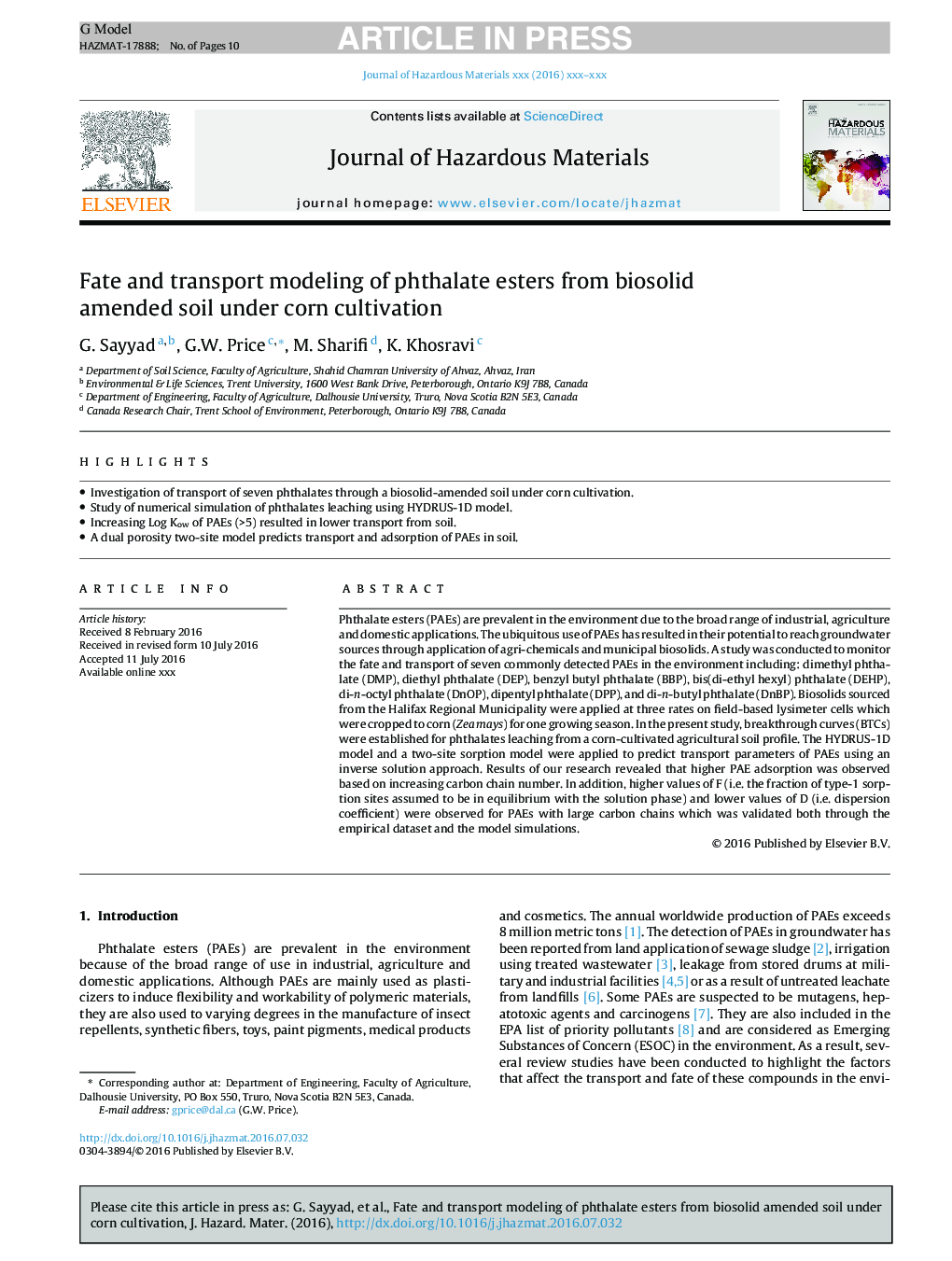| Article ID | Journal | Published Year | Pages | File Type |
|---|---|---|---|---|
| 4979959 | Journal of Hazardous Materials | 2017 | 10 Pages |
Abstract
Phthalate esters (PAEs) are prevalent in the environment due to the broad range of industrial, agriculture and domestic applications. The ubiquitous use of PAEs has resulted in their potential to reach groundwater sources through application of agri-chemicals and municipal biosolids. A study was conducted to monitor the fate and transport of seven commonly detected PAEs in the environment including: dimethyl phthalate (DMP), diethyl phthalate (DEP), benzyl butyl phthalate (BBP), bis(di-ethyl hexyl) phthalate (DEHP), di-n-octyl phthalate (DnOP), dipentyl phthalate (DPP), and di-n-butyl phthalate (DnBP). Biosolids sourced from the Halifax Regional Municipality were applied at three rates on field-based lysimeter cells which were cropped to corn (Zea mays) for one growing season. In the present study, breakthrough curves (BTCs) were established for phthalates leaching from a corn-cultivated agricultural soil profile. The HYDRUS-1D model and a two-site sorption model were applied to predict transport parameters of PAEs using an inverse solution approach. Results of our research revealed that higher PAE adsorption was observed based on increasing carbon chain number. In addition, higher values of F (i.e. the fraction of type-1 sorption sites assumed to be in equilibrium with the solution phase) and lower values of D (i.e. dispersion coefficient) were observed for PAEs with large carbon chains which was validated both through the empirical dataset and the model simulations.
Related Topics
Physical Sciences and Engineering
Chemical Engineering
Chemical Health and Safety
Authors
G. Sayyad, G.W. Price, M. Sharifi, K. Khosravi,
